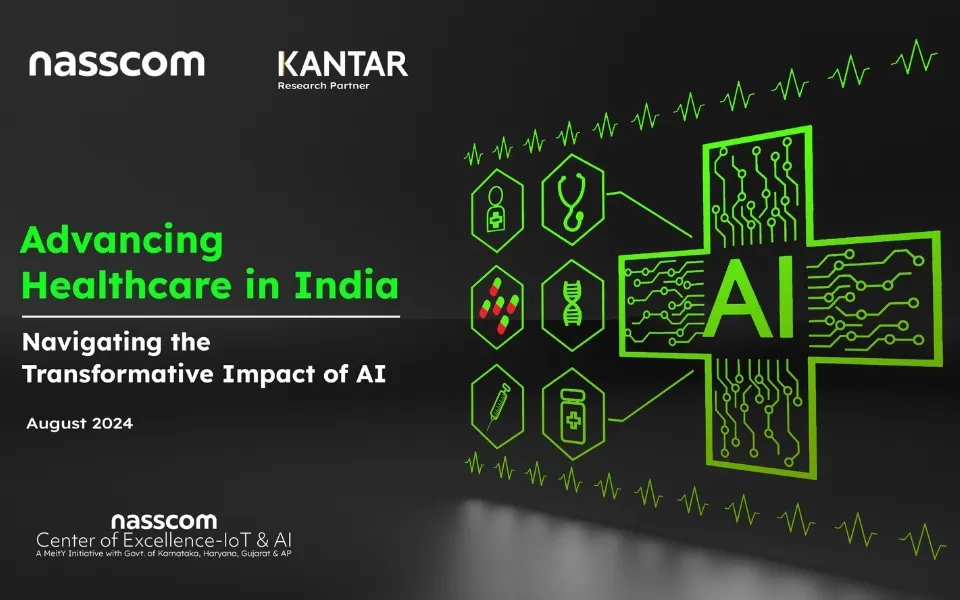LEVERAGING DIGITAL TO TRANSFORM PATIENT CARE
Good health is a Journey. Every individual must be the CEO of their own health and make informed decisions. Poor health not only impacts the individual and their family but the entire society at large. Welcome to the realities of the connected world.
These are some of the emerging lessons in the post-pandemic era.
The Indian Healthcare scenario presents a vast opportunity for innovation, patient engagement, and digital transformation like never thought before. The pandemic has given the stakeholders an opportunity to redefine their approach to healthcare and the world is waking up to the dream of putting patients’ safety first and taking a holistic view of their needs. Artificial intelligence in healthcare and proactive patient engagement is now becoming mainstream for many provider organizations and for good reasons.
What Do Patients Expect?
Healthcare can be divided into Critical care, Chronic Care & Wellness, and the mantra for engagement success are Quality, Access & Cost with patient safety and welfare as the key criteria for the measure of outcome.
Patients expect quality customer service from the providers. It is easier said than done when you want to adhere to the cardinal principles governing quality care and adhering to medical ethics which gives very little room for error.
Let us address the cardinal rules and see what makes the difference.
Enhancing Access
It has been proven that technology makes accessing quality information and thus quality care easier. Great customer service is often considered an essential part of healthcare. The use of technology minimizes the room for error and providing a superior user experience enhances patient satisfaction thereby improving the quality of care.
1. Improve Accessibility – Leverage Technology
A medical emergency can happen at any time. Patients need to know that they can contact their healthcare provider 24×7.
Virtual patient care services and counseling through bots are becoming mainstream. With remote patient monitoring software and tools, Virtual Patient Counsellors learn quickly through inputs on the clinical conditions and through integration with the patient clinical records, providing a consistent and superior user experience. These Virtual Patient Counsellors supported by trained patient counselors from the hospitals supplement the personal touch and compassionate care. We have witnessed patient satisfaction going up consistently where technology and humans co-exist, resulting in improved quality of care and optimization of costs.
The digital disruption is also leading to wider adoption of patient care portals which provide extensive and personalized information based on their clinical conditions, besides becoming a single point of contact for managing patient information between the provider and receiver.
2. The Telemedicine Revolution
Scheduling medical appointments online save time and, if executed properly, limits the risk of miscommunication. As more businesses move to the digital sphere, making your healthcare website or online portal user-friendly is essential for providing excellent customer service.
The pandemic has accelerated the disruption of certain care areas with the innovative use of technologies. Although telemedicine existed for decades, it is now being increasingly reinvented in many ways – digital portals, adoption of medical devices for continuous monitoring of patient health conditions assisted by video consultations with caregivers, etc. There is a tremendous upsurge of innovations in ‘point of care’ and without exception, every home can now have access to high-quality care at affordable costs from the best of the consultants.
We are also seeing innovative usage of telemedicine being integrated with AI-assisted medical imaging solutions reducing time and significantly reducing the cost to patients. The rise of AI in medical imaging itself is set to transform early detection and intervention and significant cost saving for patients over time.
3. From High Touch to High Tech – Leveraging the “Bottom-Up” Approach to Patient Service
Not long ago we have seen providers using a ‘top-down’ approach to patient services. This means a set of defined protocols are meticulously followed by patient service counselors to provide care. These regimes have, for a long period, isolated the medical administrators from the reality of what patients want and had resulted in higher patient dissatisfaction impacting both patient outcomes and inconsistent financial performance.
Of late, providers have been adopting technology and more specifically automation to manage the outcomes. This has resulted in more informed patients, counselors, and providers improving the quality of care.
Further with the extensive feedback system in every point of care, you can probably narrow down the feedback loop to the point where it gets dysfunctional and run quality programs to enhance outcomes. This has led to patients participating in the feedback process and intelligent systems running the exceptions leading to higher satisfaction levels with patients, employees, and other caregivers.
Extensive use of multiple digital channels like SMS, emails, IVRS, bots, etc., help to collect patient feedback, surveys, patient education at the point of care resulting in a significant amount of data for future use. The learning also becomes a useful guide to enhance internal training and fine-tuning protocols resulting in optimizing costs and significantly enhancing value to the stakeholders.
4. Rewards & Recognition in Patient Care
With the extensive availability of data, the medical administration now has a lot of data points to act upon and more so to really recognize their star performers and suitably reward them. We have seen extensive integration of data from feedback and work performance.
Patient care suffers when a healthcare organization lacks accountability and more so when they know they will not be held accountable for their actions. Moreover, with accountability, you can help your business identify areas in which it can improve. Particularly when any issue arises an accountability system helps mitigate problems faster.
Bottom Line
Great patient service can help you create delighted patients. A happy, satisfied patient is more likely to come back – and even refer people – to you and your facility if they have received exceptional care. If a patient gets a less than warm feeling, they are likely to search out the next option. The reputation that you develop will be vital in determining whether patients seek you out in the future.
Digital leaders are adopting newer technologies to drive operational efficiency, provide the best telemedicine service, proactive patient care, educating patients through their wellness programs and other outreach programs. They are increasingly relying on leveraging data and next-gen technologies to enhance patient experience and delight.
At the end of the day, you want your patients and customers to be happy. Hence, sustained investment in patient engagement and leveraging technology for outcomes and engagement significantly improves loyalty, leading to patient retention and referral and a higher probability to enhance revenue in view of better engagement and outcomes.
About the Author –

S Chandra Mouli
Digital Strategist
Chandra Mouli is a Digital Strategist and a Technology Advisor for Sankara Nethralaya. Until recently, he was their Chief Information & Technology Officer. Assisted by a committed team of technology enthusiasts, he was driving innovation and transformation programs leading to significant enhancement in operational efficiency with predictable outcomes.
His foresight and strategies in enabling secure and trusted infrastructure with multi-cloud capabilities have enabled the adoption of Tele Ophthalmology solutions – the launch of SN Digital services integrating AI with clinical records for improved patient care.
He mentors technology startups and is on the Advisory Board of a few companies. As a technology evangelist, he champions the cause of digital adoption in various forums. He has over 35 plus years of industry experience and had been part of the management team member of global technology companies. This article was originally published in GAVS Technologies
















